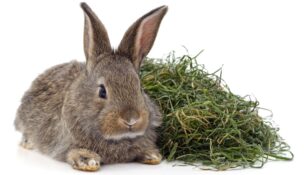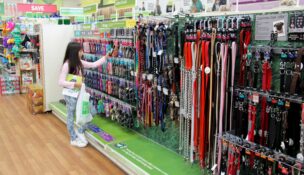The Museum of Aquarium & Pet History Celebrates Historical Artifacts
By Gary Bagnall//September 1, 2023//
The Museum of Aquarium & Pet History Celebrates Historical Artifacts
By: Gary Bagnall//September 1, 2023//
In the world today, there are over 100,000 museums devoted to the purpose of collecting, preserving, interpreting and displaying objects of artistic, cultural or scientific significance for the study, education and viewing pleasure of the public.
Yet with all these museums — of which 35,000 are in the U.S. alone — there are none devoted to aquarium or pet-keeping history.
Welcome to the Museum of Aquarium & Pet History (MOAPH.org), which celebrated its one-year anniversary in July 2023. Although there are 15 dog or cat museums worldwide, none have covered aquariums, birds, small animals or the history of the pet industry and the people in it.
The MOAPH museum idea started in my teens when I saw my first picture of a Victorian fountain aquarium and wanted to know everything about this magnificent aquarium and work of art. The problem was that there were no books on pet history at the time (except a few on dog or cat history), so I was on my own. More than 40 years of collecting aquariums and pet artifacts later, the Museum of Aquarium & Pet History was born.
Today, the MOAPH museum has the world’s most comprehensive collection of artifacts related to aquarium and pet keeping including over 3,000 antique aquariums, antique fishbowls and stands, bird cages, squirrel cages, dog and cat food cans, boxes and cloth sacks, turtle products, and even pet items that belonged to Queen Victoria or famous movie stars.
The museum is also home to the largest collection of books on aquariums dating back to the 1850s when the aquarium was invented, plus other pet books on canary birds or small animal keeping dating to the late 1700s. The museum library also has the largest collection of aquarium club newsletters (1,000+) dating back to the early 1900s. The museum library has over 10,000 books and magazines on the aquarium, birds, dogs, cats and other pet-keeping subjects.
Currently, the MOAPH museum is online only, but we recently procured a 10,000-square-foot building with hopes of having a physical museum, which will be located in San Luis Obispo, California, open to the public in the next three to four years. It’s exciting to think of the day that pet lovers will have an opportunity to view busy shelves that showcase turtle products from the 1930s, vintage dog food cans that include a dog food jar for Balto Dog Food, historic “transport cages” that display advertisements from bird product companies, a vintage run of Milk-Bone Dog Biscuits, Metaframe Aquarium boxed kits, Tetra-Min fish food displays and beautiful fishbowl stands that date back to the 1920s.
The online MOAPH museum has new monthly content with original articles written by some of the best pet historians in the world. We also have an active YouTube channel with new “5-minute video” weekly releases, plus a main pet history video release monthly. The MOAPH YouTube page has released videos covering the history of such companies as Penn-Plax and Eheim. Jon Willinger also spoke in a video about the history of his father’s involvement in Wil-Ness, Metaframe, Willinger Bros., Living World/Mattel and, of course, his own company JW Pet. MOAPH has the only videos related to the history of commercial-made Victorian and Art Deco era bird cages, which are currently our two most viewed videos.
We also have various articles on reptile keeping from well-known reptile herpetologists James Murphy and Jon Coote. The very first YouTube video that we posted in April 2022 offers an overview of “Building No. 1.” It took two years to set this building up in a museum display fashion, which was accomplished during the slow times of the COVID pandemic.
Though our writers are from all over the world including the U.S., Italy, Germany and England, we are always on the hunt for people who have lived pet history by working in the industry or are aquarium or pet-keeping hobbyists.
Moving forward, MOAPH is always looking to interview companies that have historical significance (longevity) in the industry or famous hobbyists that have created new color morphs of tropical fish or reptiles (think ball pythons) or have “cracked the code” on breeding rare and difficult species. We also like to interview family members who remember the histories of companies or hobbyists in their family line. Currently, MOAPH has a small staff of three people who publish the weekly/monthly content as well as three full-time writers and several freelance hobbyists. If you are interested in writing a historical article related to pet keeping, please get in touch with us via our website.
Lastly, if you want to support this new museum going forward, you can do so in two ways; one is to donate any aquarium or pet artifact, books, magazines, papers, etc., to the museum that you have sitting in your garage collecting dust, or two; go to the website and make a financial one time or monthly donation. The Museum of Aquarium & Pet History is a 501(c) nonprofit.
Gary Bagnall has worked in the pet industry for over 55 years, starting at Russo’s Wonderful World of Pets at age 11. At age 13, he co-founded the Orange County Aquarium Society with his co-worker Howard Keffer; at age 16, he managed his first pet store, Southwest Pet Center. At age 19, Bagnall briefly worked for a tropical fish wholesaler in Los Angeles and, in the same year, started his live reptile import/export business, California Zoological Supply. Cal Zoo leads to a spin-off making products for reptiles which is Zoo Med Laboratories, Inc., still in business today. Bagnall holds six reptile product patents but is most proud of inventing the first UVB lighting for reptile enclosures, now the standard the world over. Bagnall has earned Lifetime Achievement Awards from both the World Pet Association and the American Cichlid Association. He is currently chairman of the board of USARK. (United States Association of Reptile Keepers.)



















